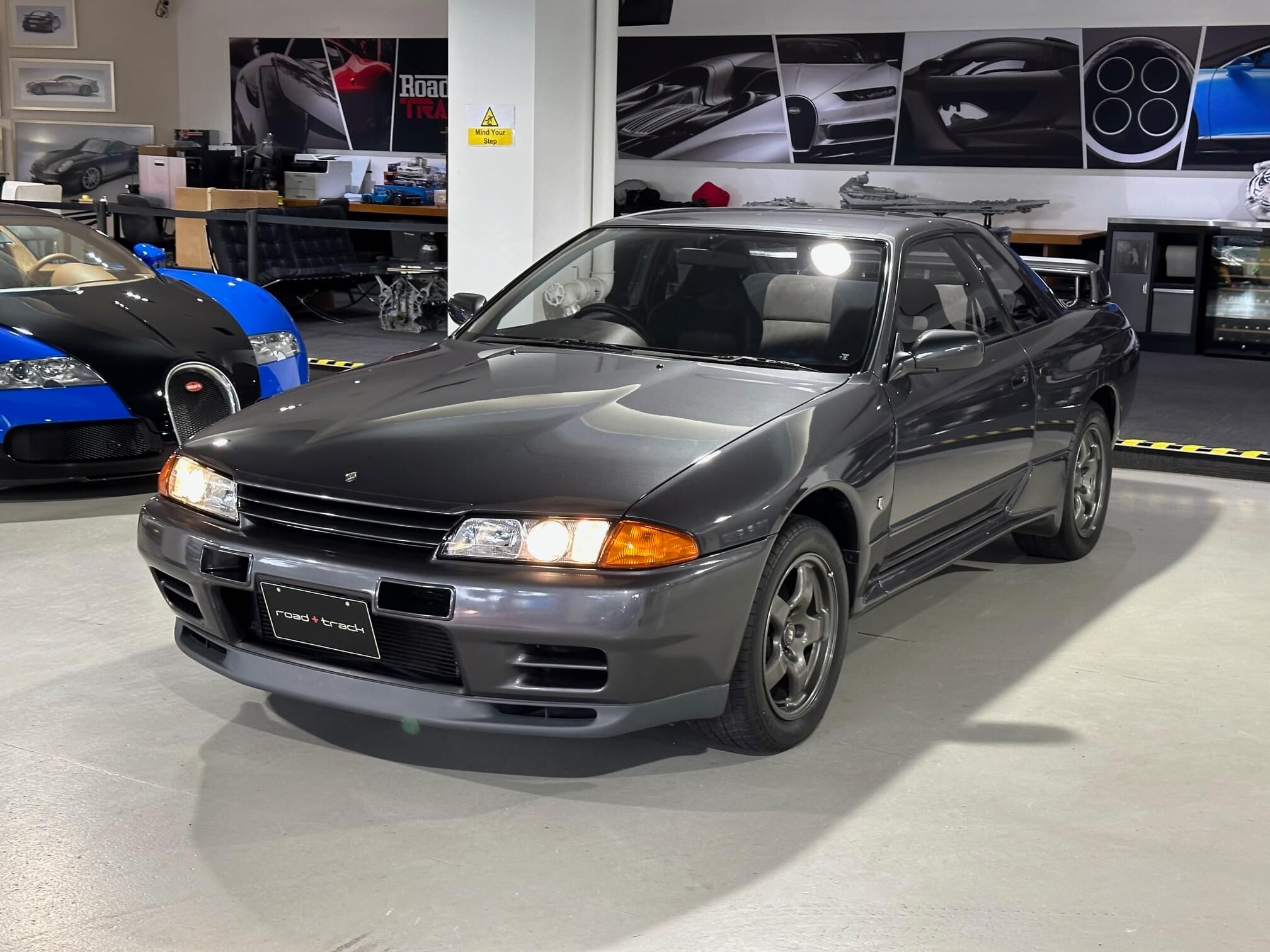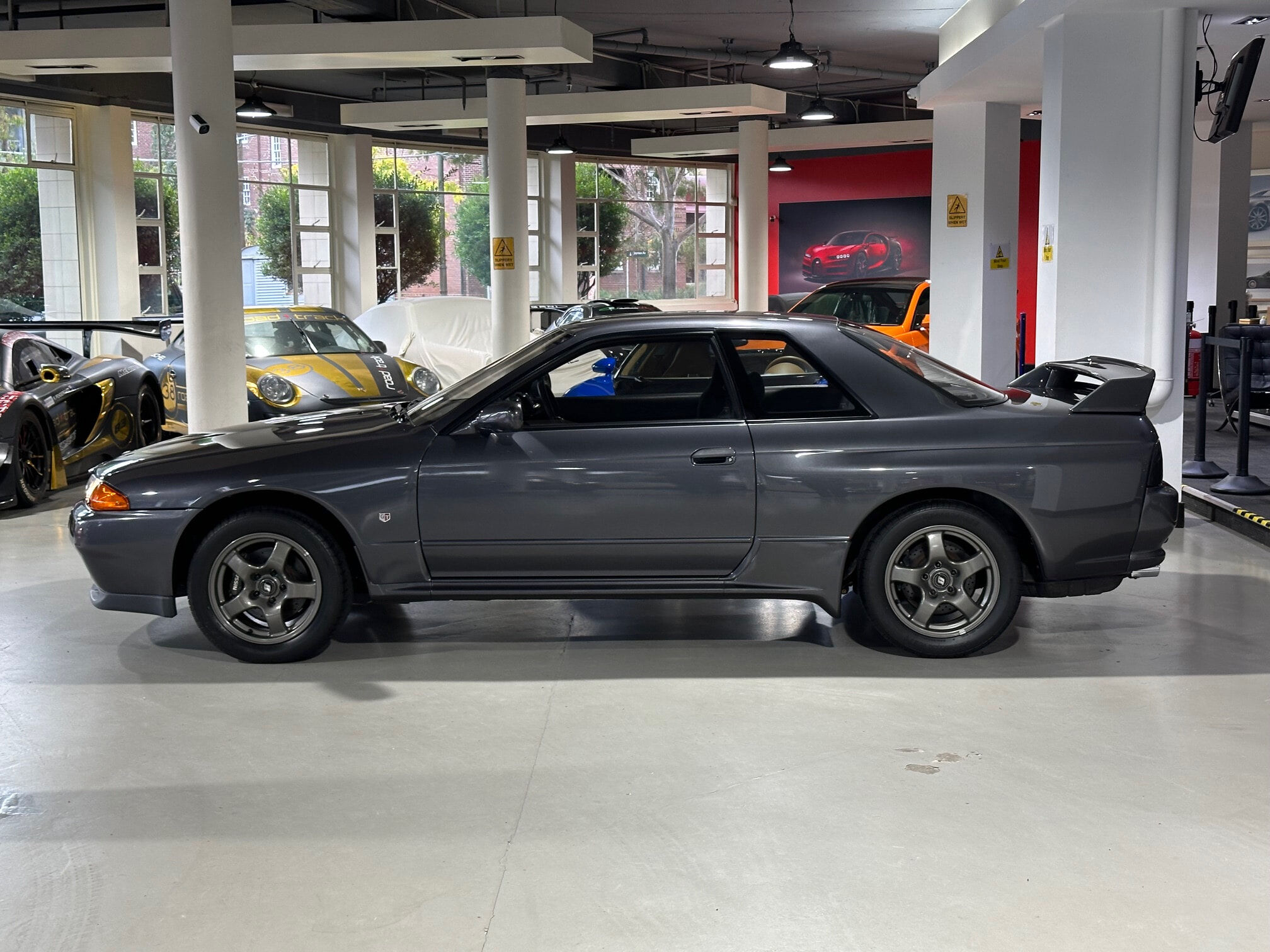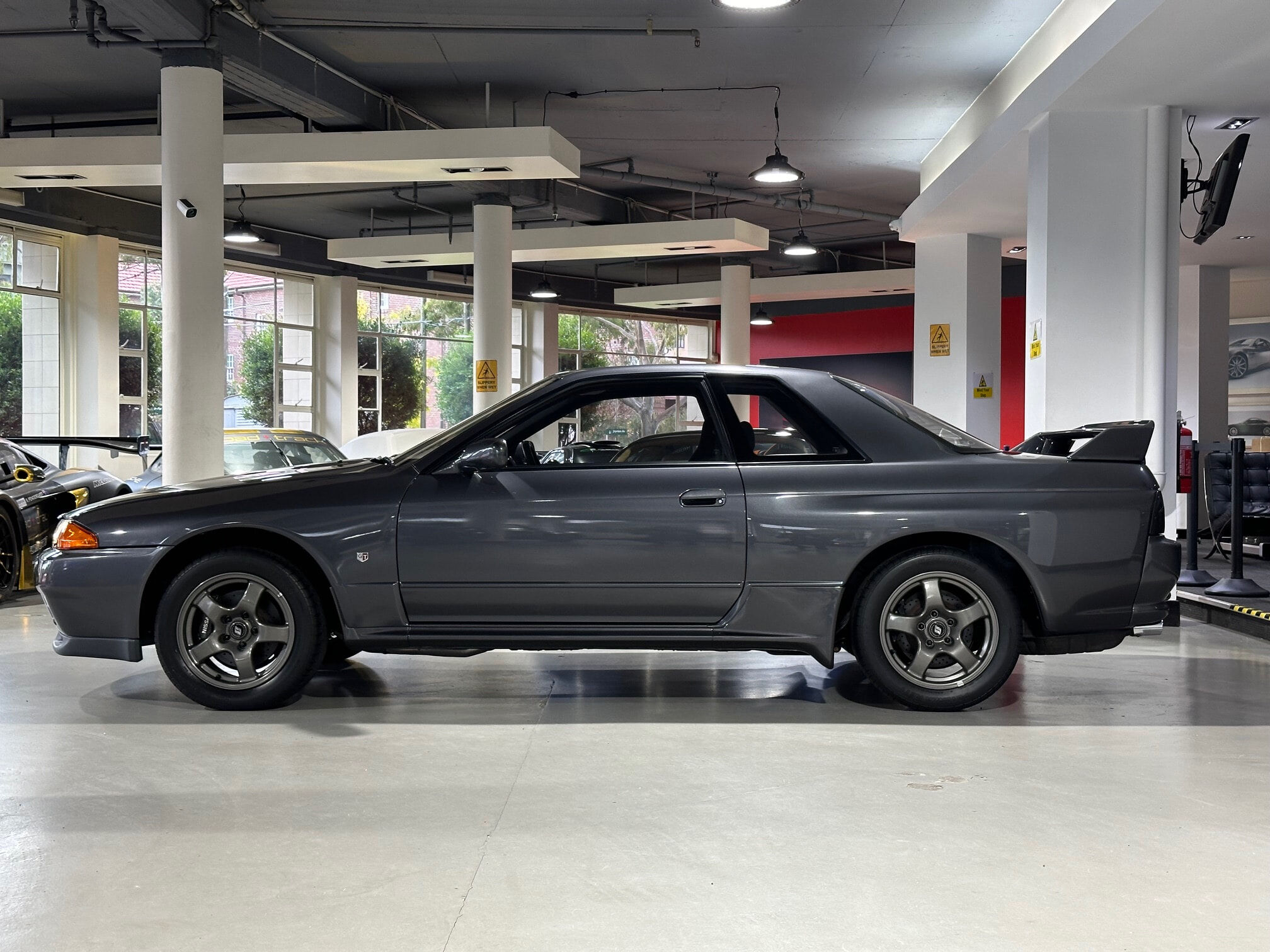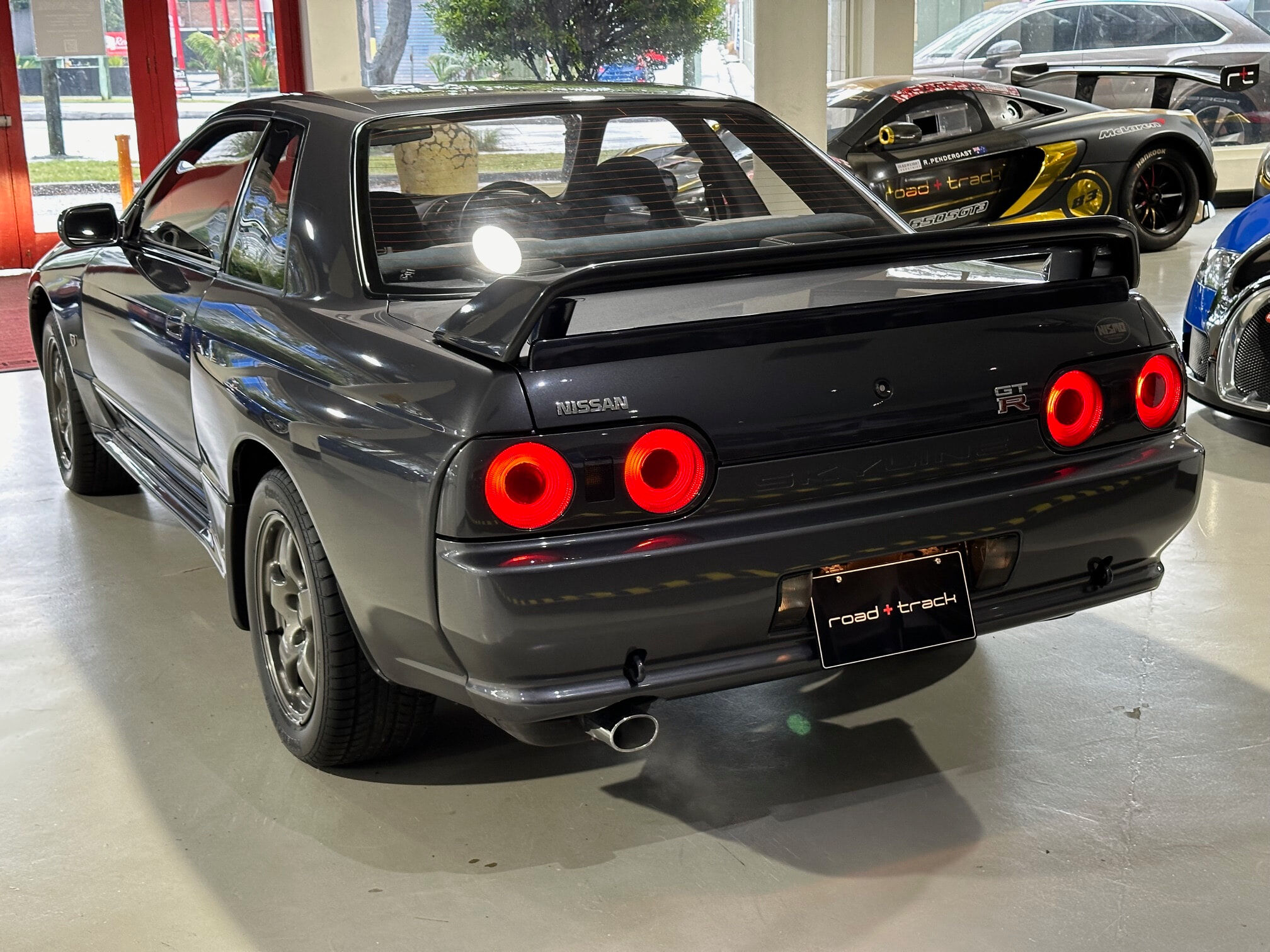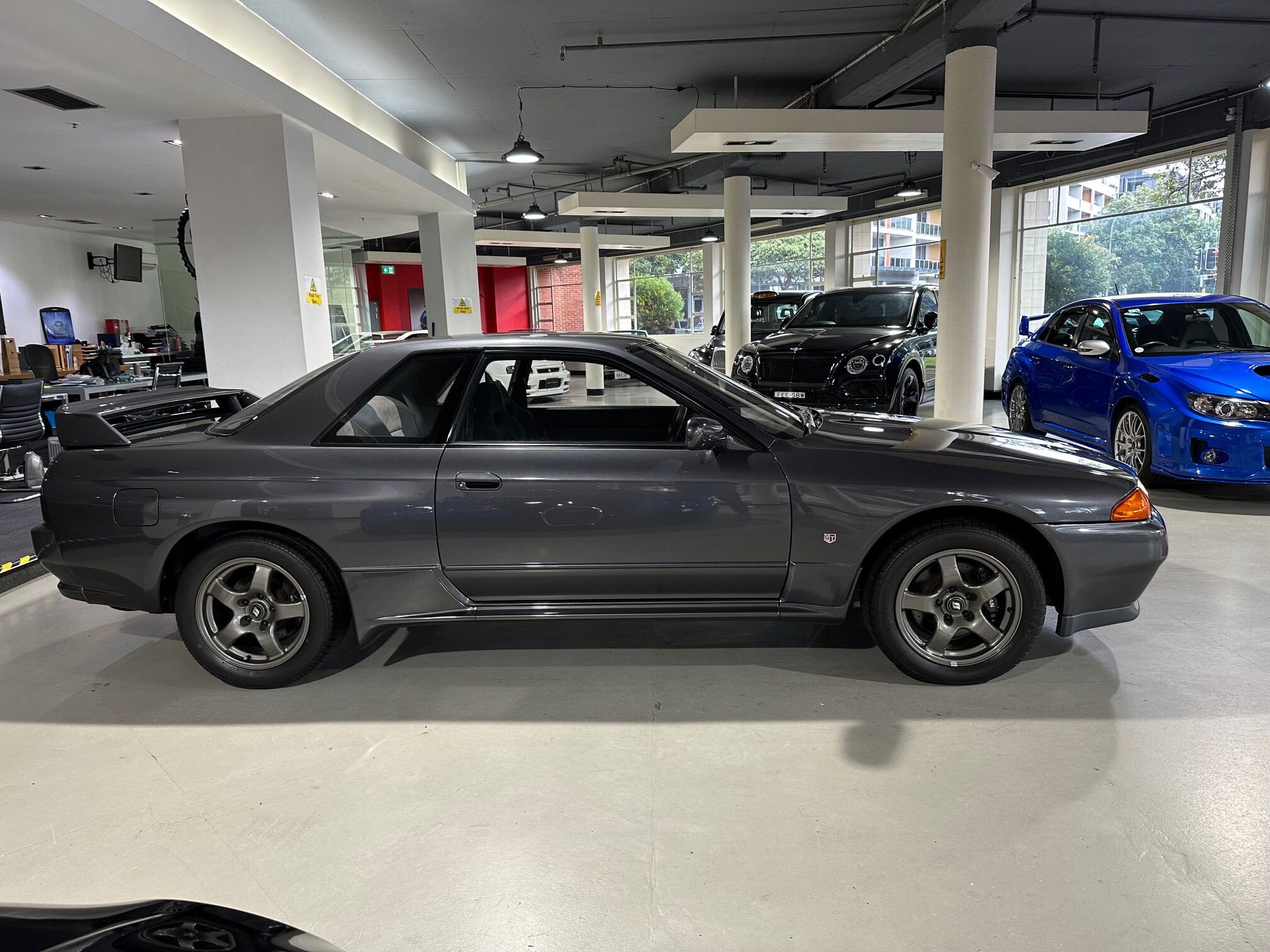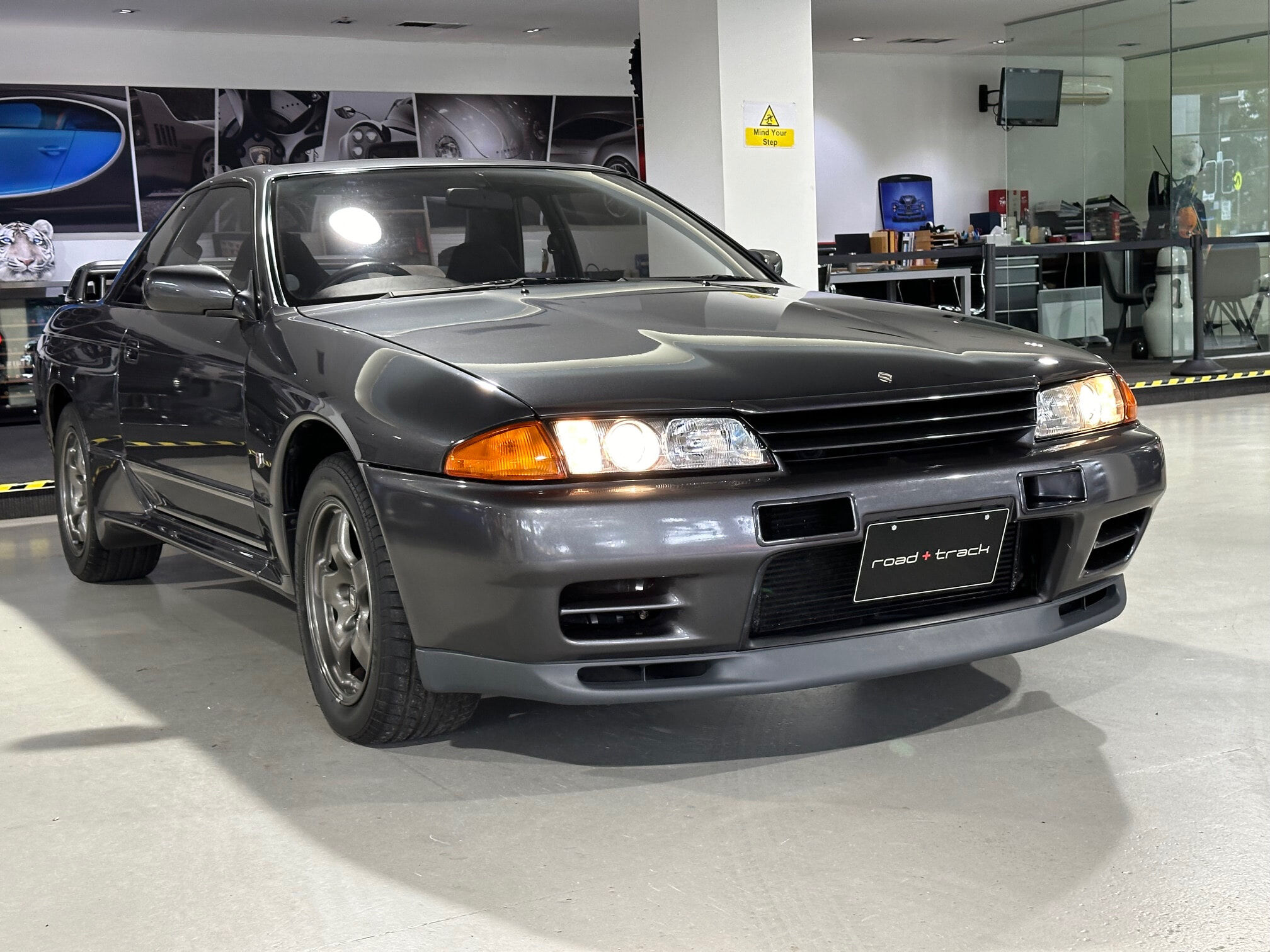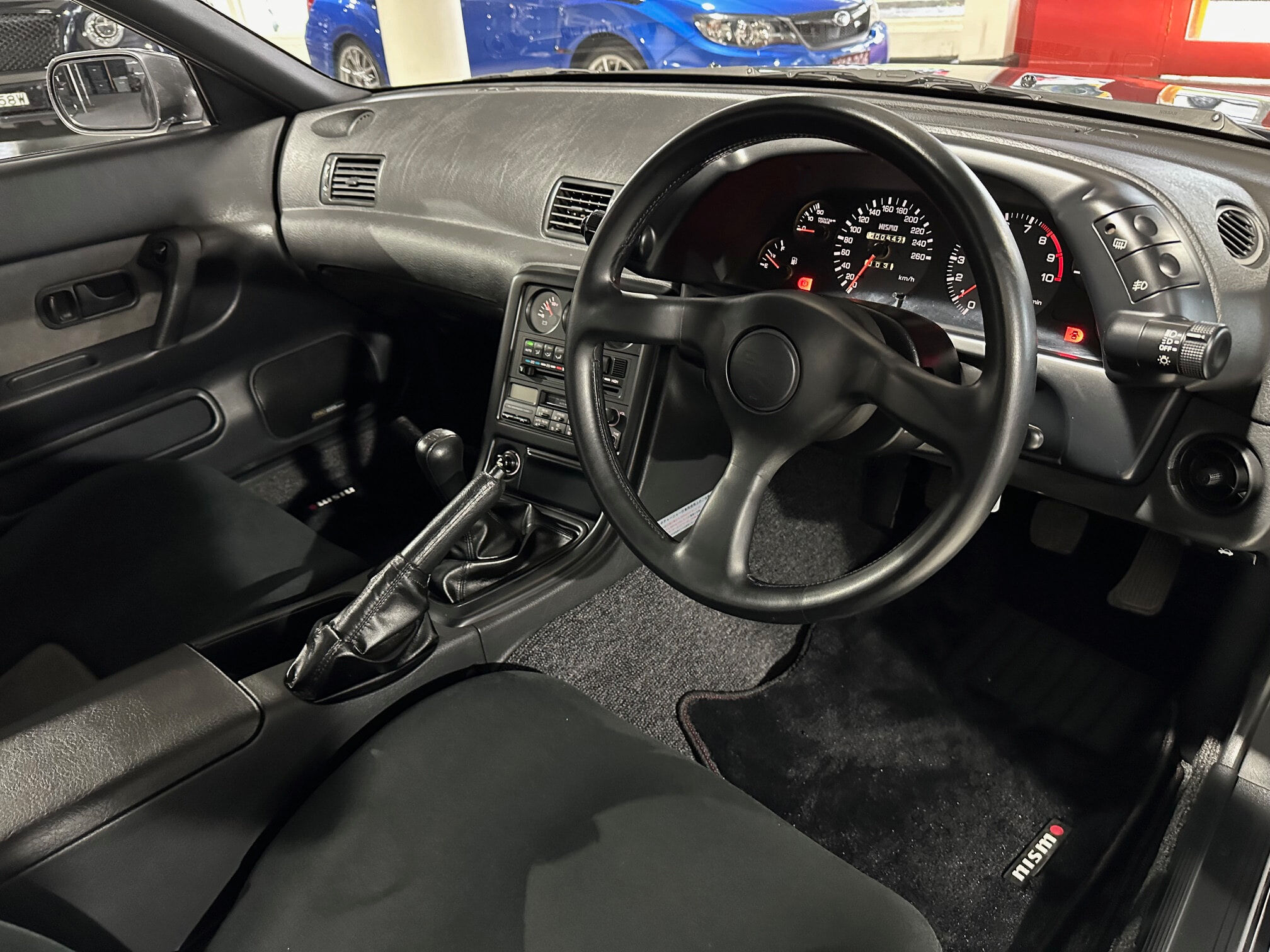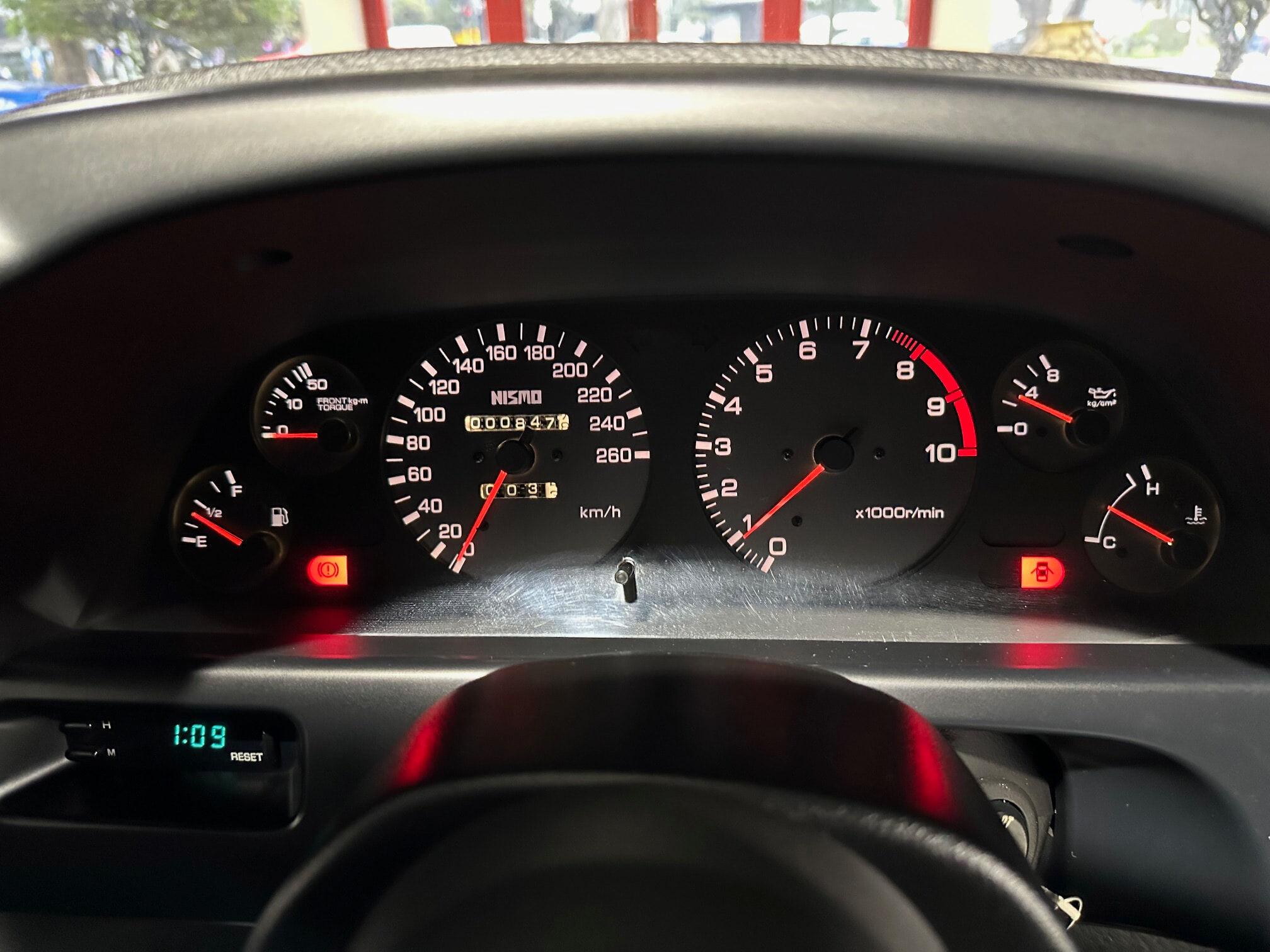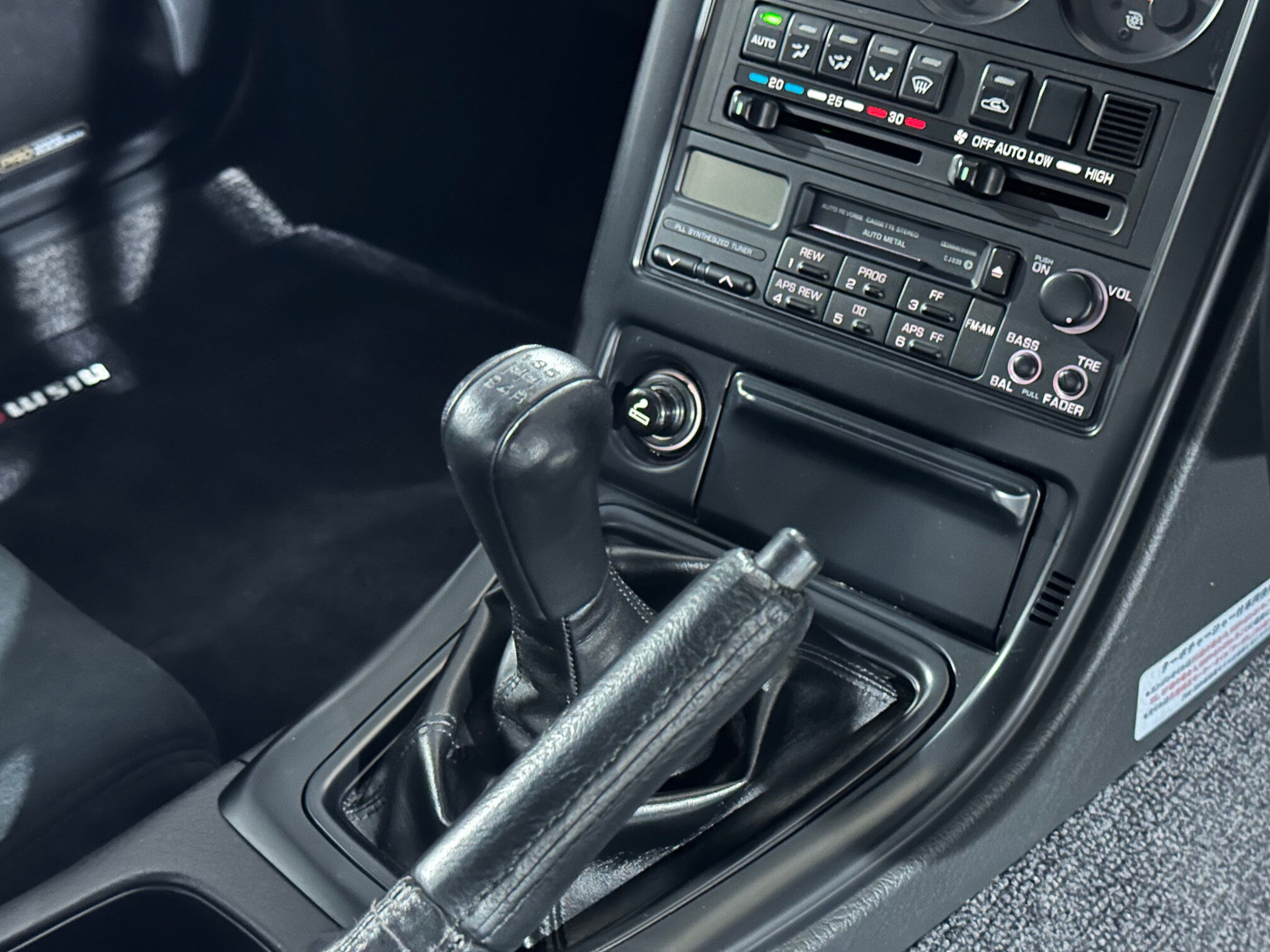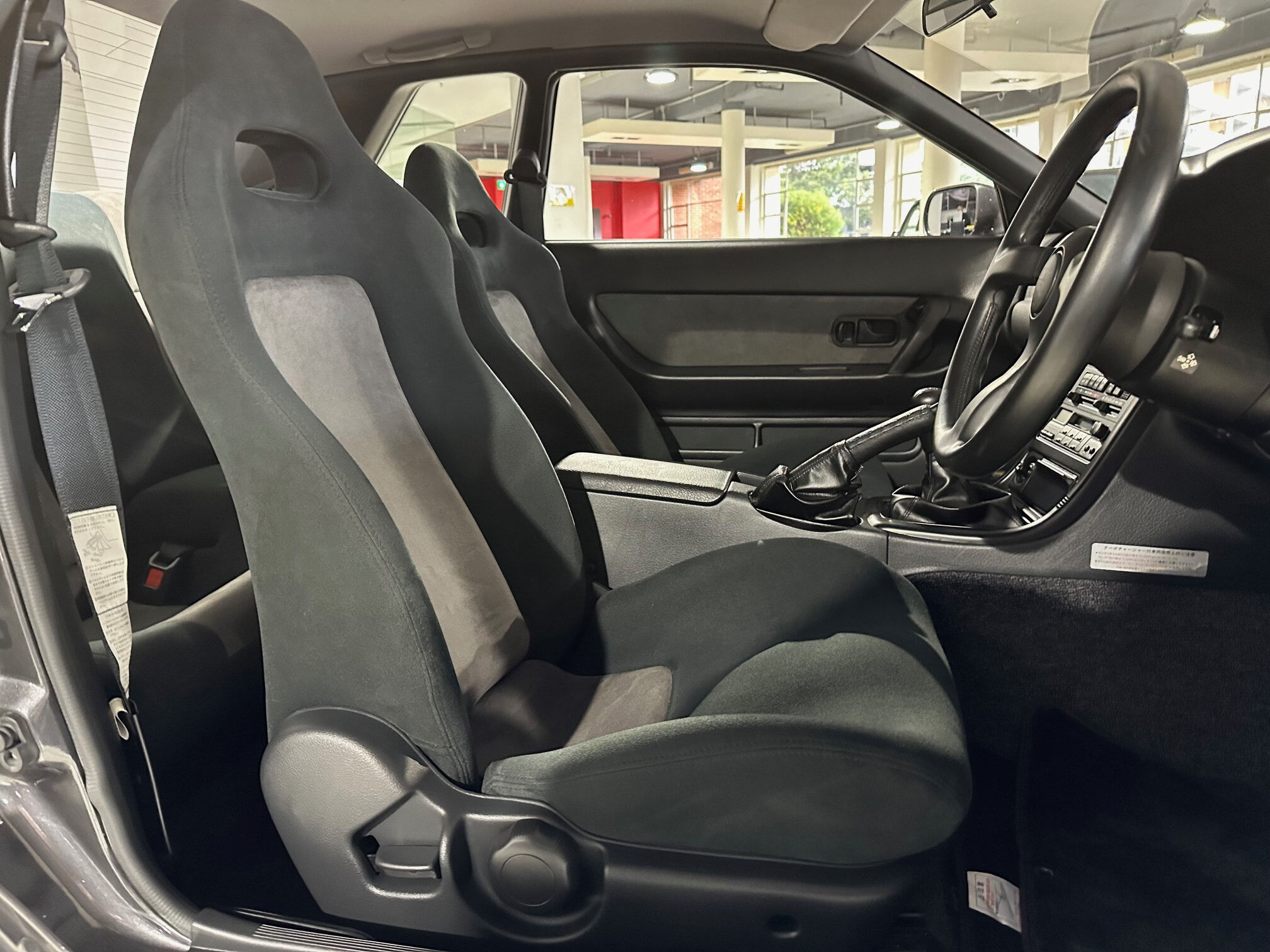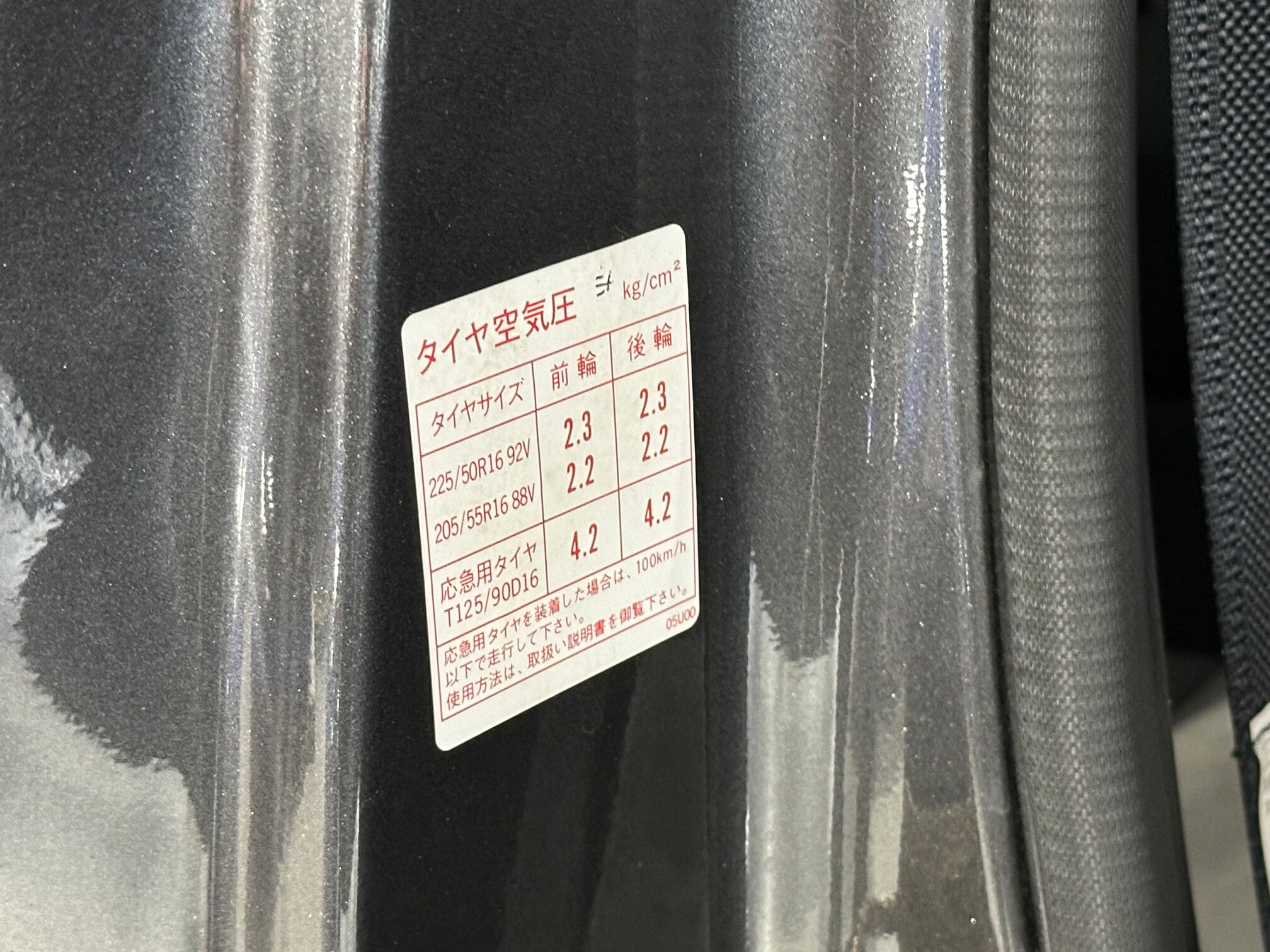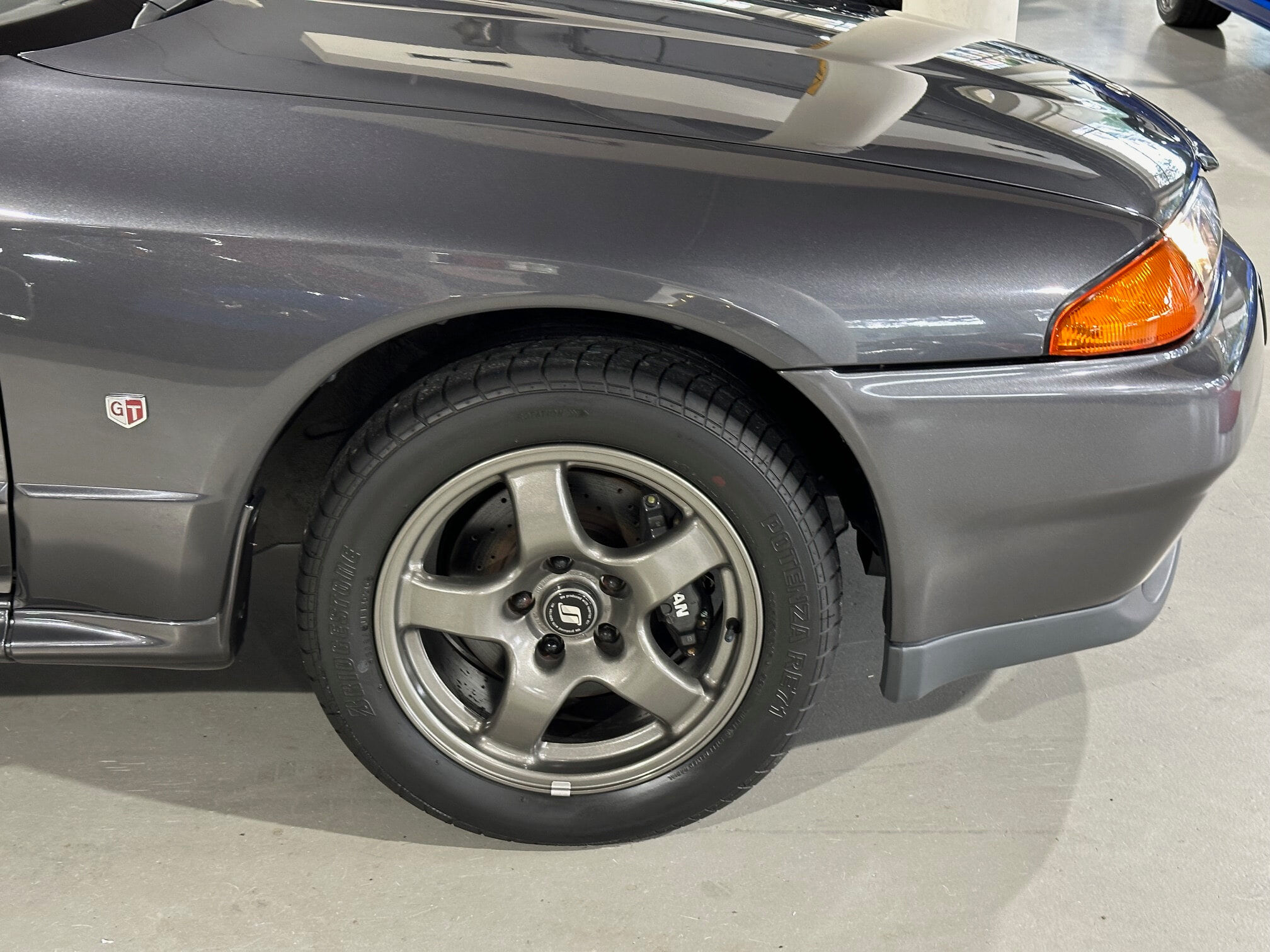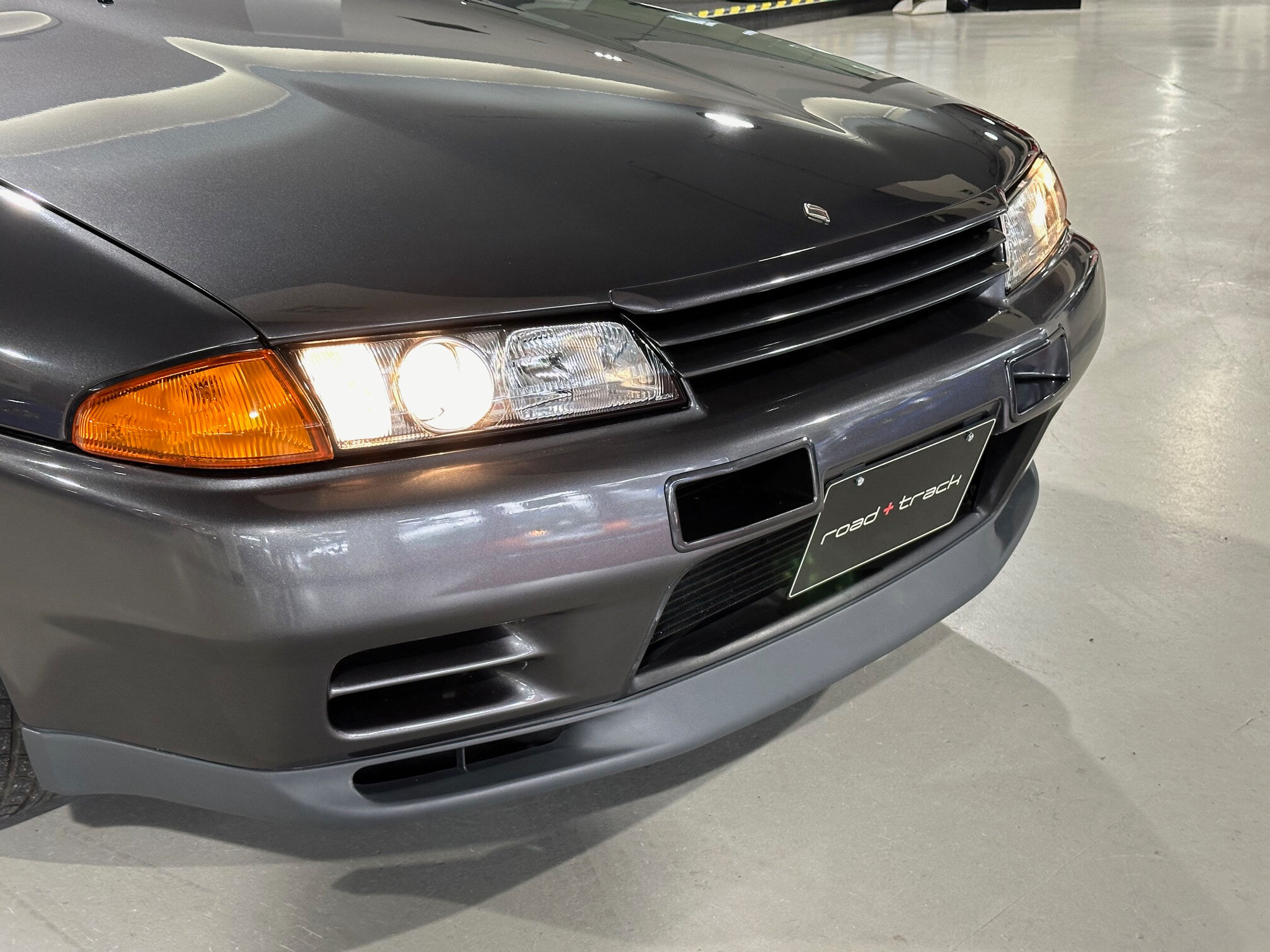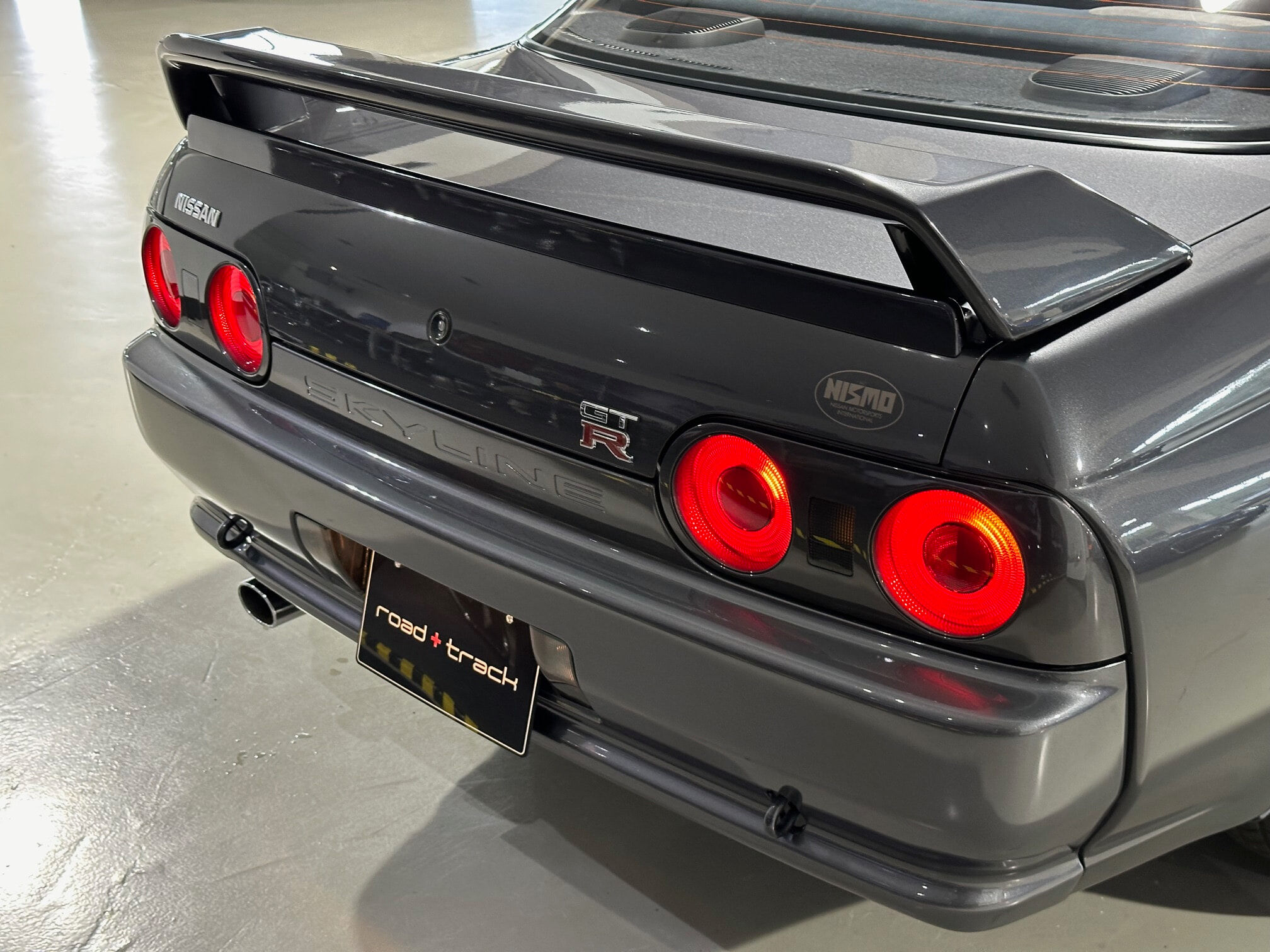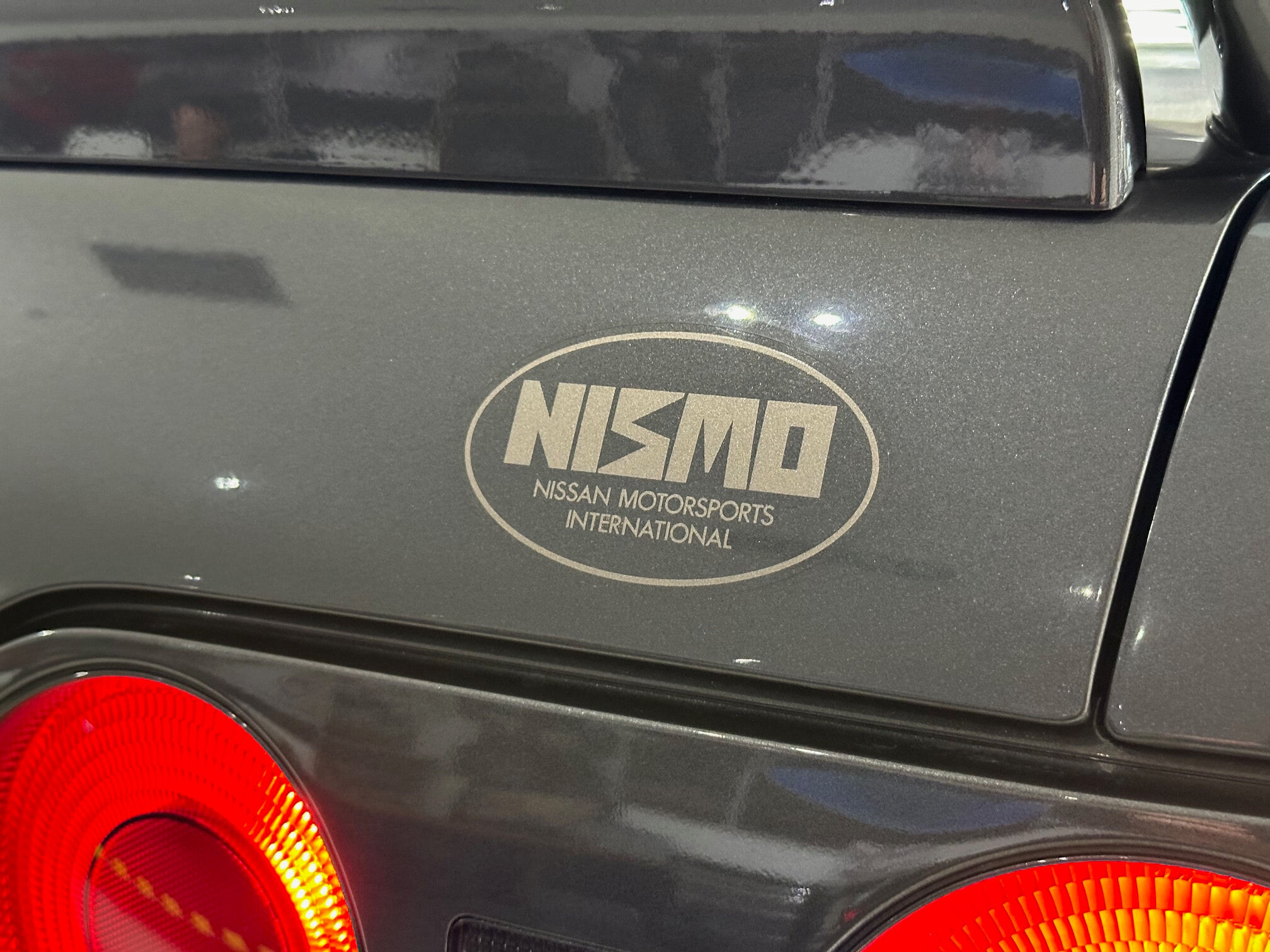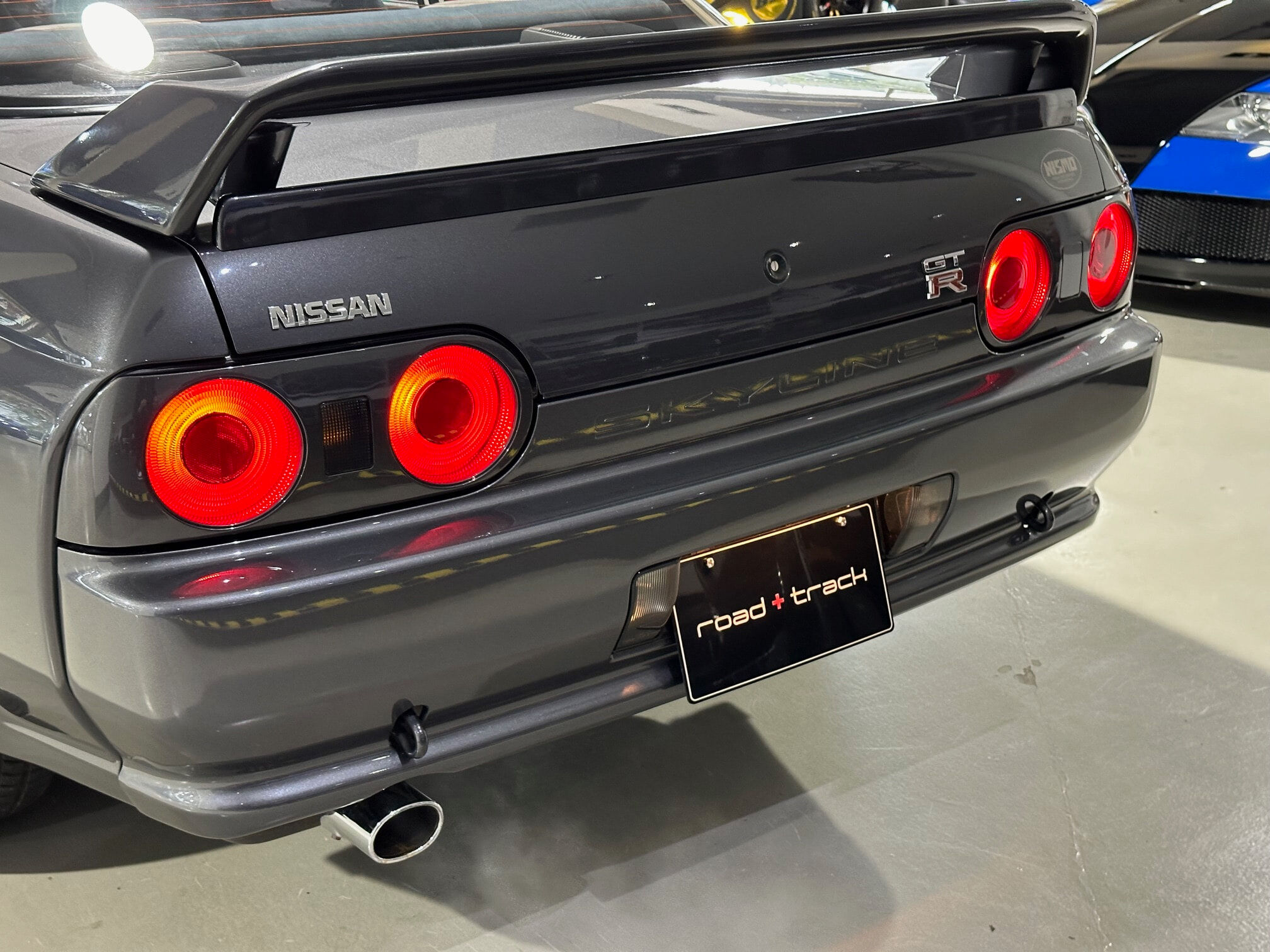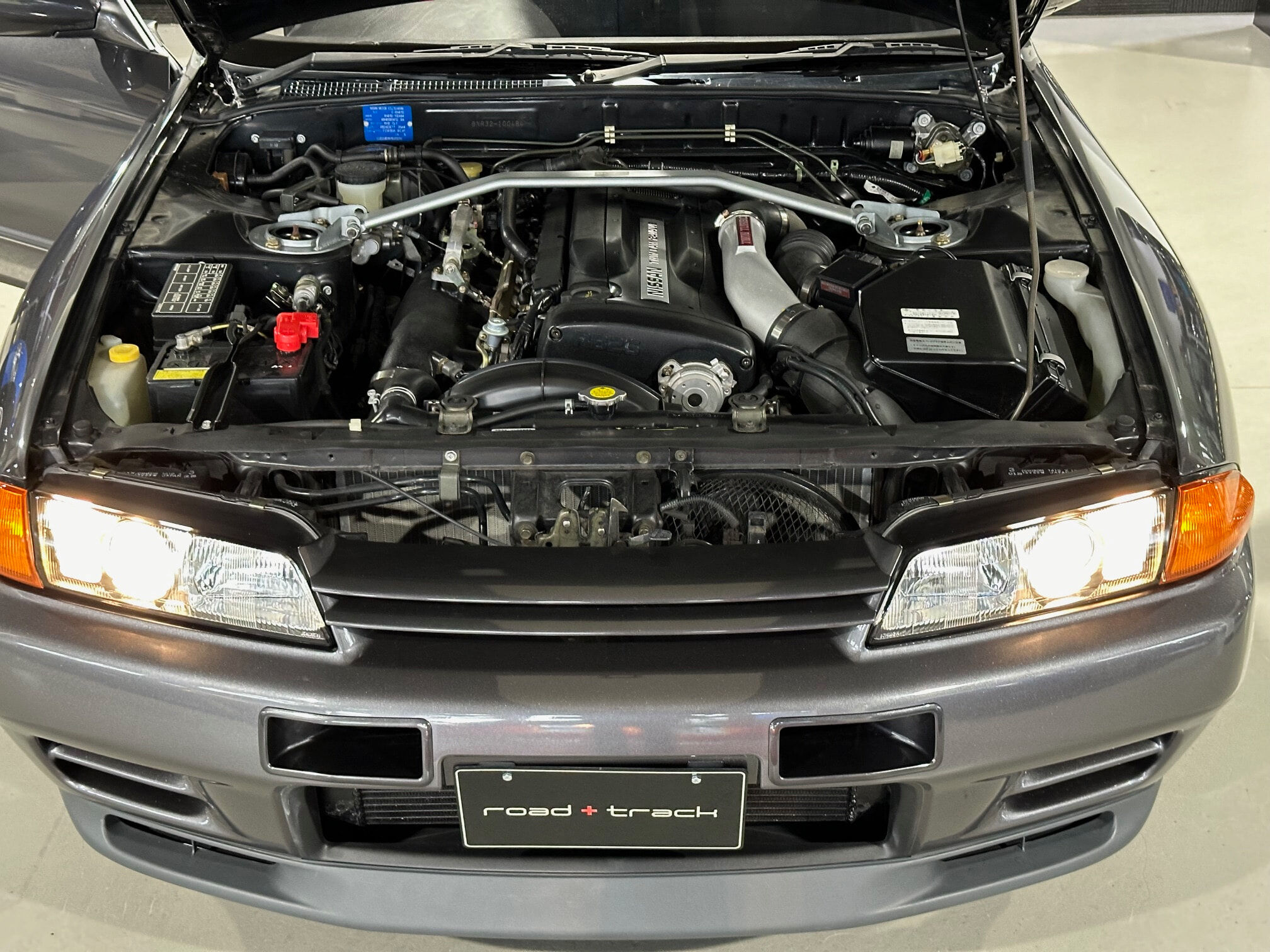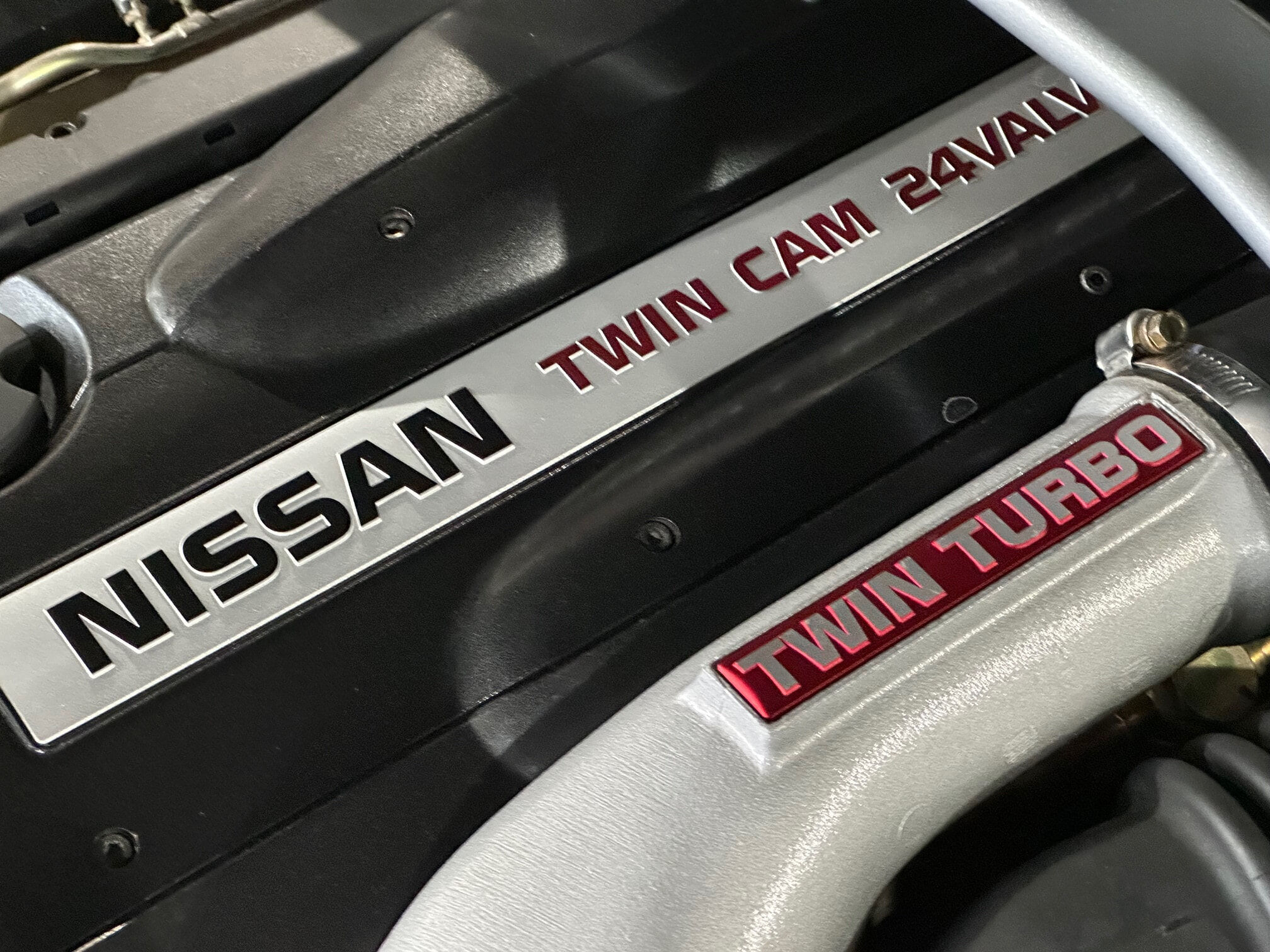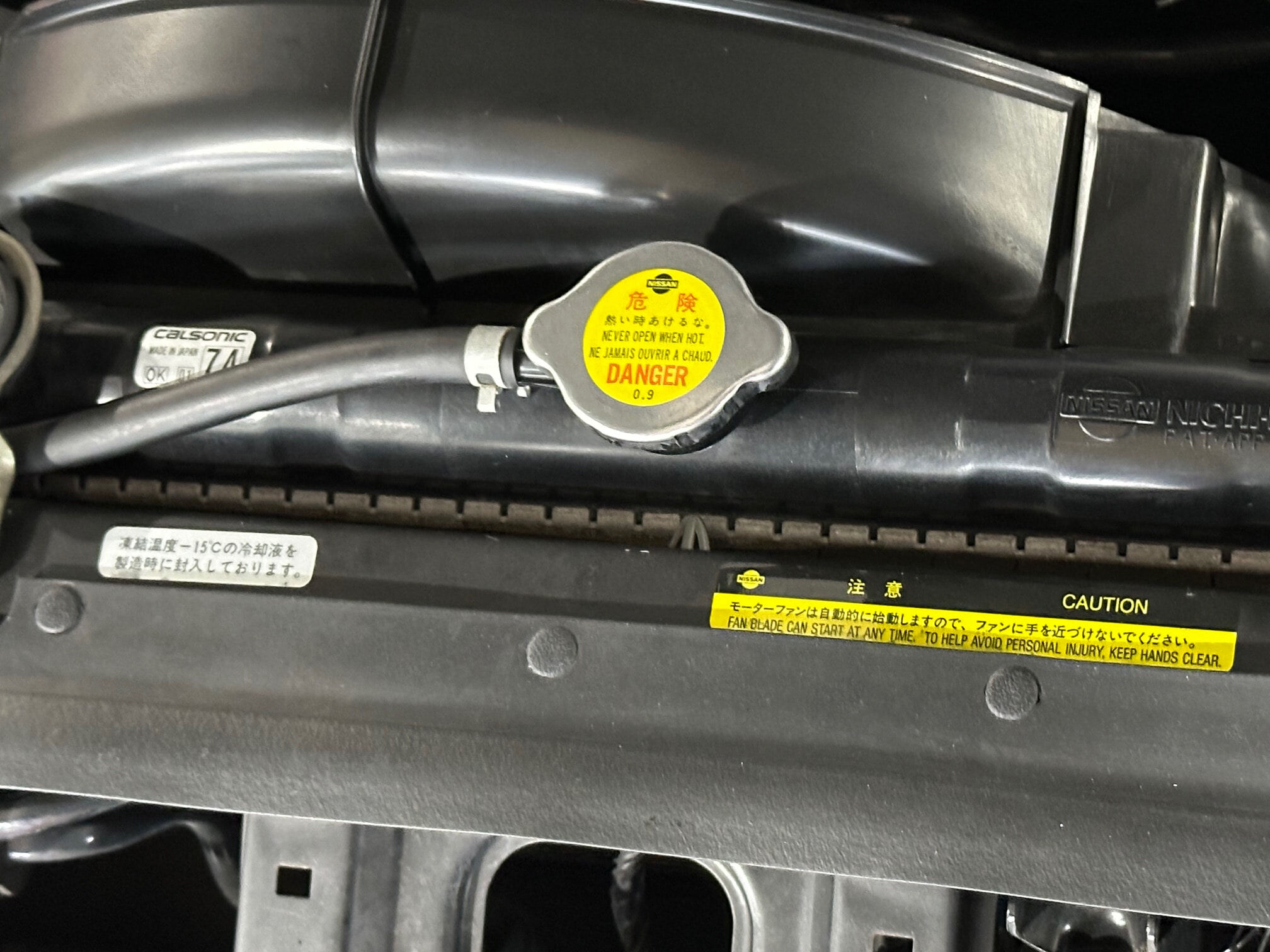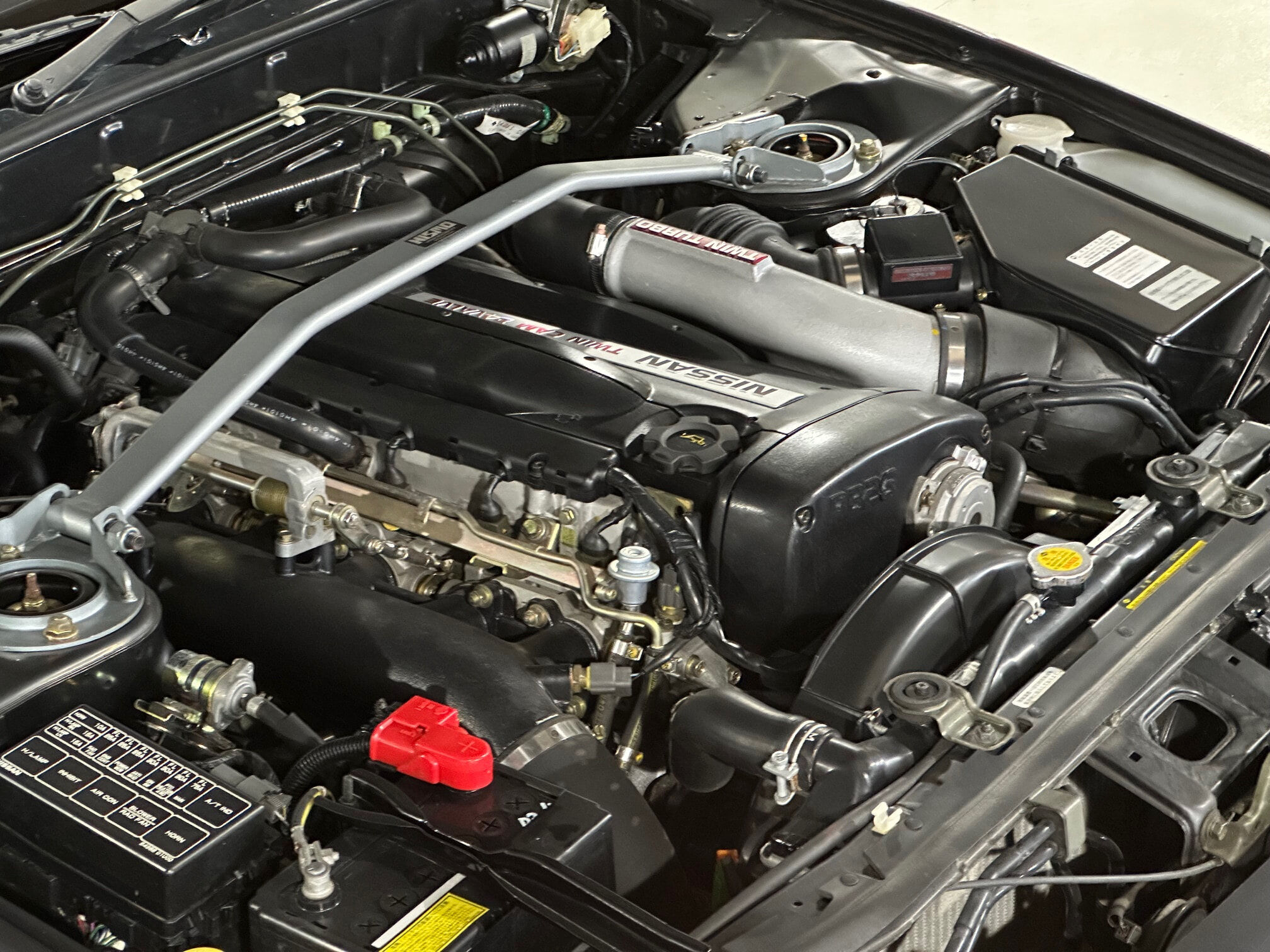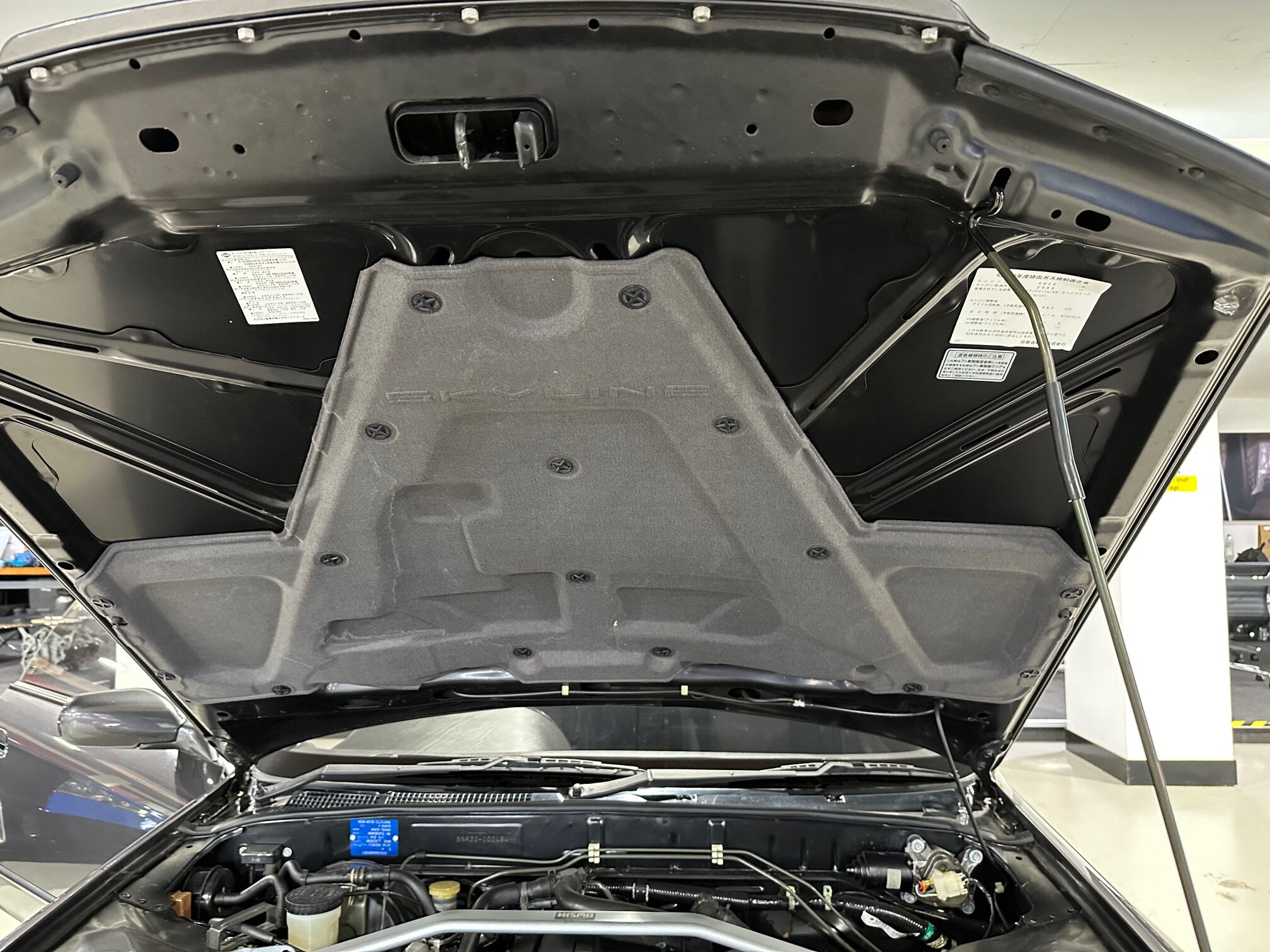1990 Nissan Skyline GT-R (BNR32) Nismo
SPECIFICATIONS
847
Coupe
5-speed Manual
2.6L Inline 6 cylinder Twin-Turbo
N/A
N/A
DESCRIPTION
**DEPOSIT TAKEN**
1990 Nissan Skyline GT-R (BNR32) Nismo
After a 16-year hiatus, the GT-R name was revived in 1989 as the BNR32 ("R32") Skyline GT-R. Group A specification versions of the R32 GT-R were used to win the Japanese Touring Car Championship for four years in a row. The R32 GT-R also had success in the Australian Touring Car Championship, with Jim Richards using it to win the championship in 1991 and Mark Skaife doing the same in 1992. The car was so successful it led the ATCC to a regulation change to exclude the GT-R in 1993. The technology and performance of the R32 GT-R prompted the Australian motoring publication Wheels to nickname the GT-R "Godzilla" in its July 1989 edition.
The Skyline GT-R (KPGC10) first appeared in 1969 and was instantly successful in motorsport in Japan. It wasn't until the R32 that the rest of the world discovered Japan's ability to make world class sports cars, and the legend of 'Godzilla' is today a worldwide phenomenon.
The R32 was the first model equipped with the RB26DETT which developed 206 kW (280 PS; 276 hp) at 6,800 rpm and 260 lb⋅ft (353 N⋅m) of torque at 4,400 rpm,[13][20][21] it had a curb weight of 1,430 kg (3,150 lb). Nissan officially started its production run 21 August 1989,[22] and began its Group A campaign in 1990.
The Skyline GT-R Nismo, identified by the model code suffix "RA", was introduced on 22 February 1990, and attracted a premium of ¥235,500 over the standard car. It existed to homologate a number of changes related to performance, aerodynamics, weight-saving and reliability for Group A racing. Those rules required a production run of 500 units, under the "Evolution" special regulations, but an additional 60 were produced and held by Nissan to turn into race cars, rising the production total to 560 units.[23] Aerodynamic changes include: two additional ducts in the front bumper and removal of the protective honeycomb mesh to improve airflow to the intercooler, a bonnet lip spoiler to direct more air into the engine bay, deeper rear spats, and an additional boot lip spoiler to provide more downforce. The Nismo specification deletes ABS, which is not legal in Group A, and the rear wiper to save weight. The bonnet and front panels are aluminium in all GT-R models rather than the standard steel in non-GT-R models, again to save weight. Overall, the GT-R Nismo weighs 1,400 kg (3,086 lb) compared to 1,430 kg (3,153 lb) for the standard GT-R. Tyres are Bridgestone RE71 in 225/55R16 fitted to 16-inch alloy wheels. Mechanically, the GT-R Nismo uses the RB26 engine of the 'standard' GT-R but replaces the standard Garrett T03 turbo chargers with larger T04B models, sacrificing the faster spool up of the ceramic turbo wheels for the enhanced reliability of steel wheels. The GT-R Nismo was only available in colour code KH2 "Gun Grey Metallic". Other minor, but noticeable, changes include a circular "Nismo" logo on the right-rear of the boot lip, lack of radio tuning controls on the dashboard console (since a radio was optional), and cross-drilled brake rotors. Nismo-branded options available included a 260 km/h (162 mph) speedometer, 3-inch cat-back exhaust system, front suspension tower brace, sports shock absorbers, 17-inch alloy wheels, and a rear spoiler with a built-in third brake light.
This particular car has recorded only 847km of travel making it one of the lowest mileages and most original R32 anywhere outside of Nissan's museum
Buy with confidence from Australia's leading independent specialist. Finance available to approved purchasers. Trade-ins welcome. Viewing by appointment. Please contact our dealership to learn more about this vehicle. Interstate buyers welcome. Transport available.

